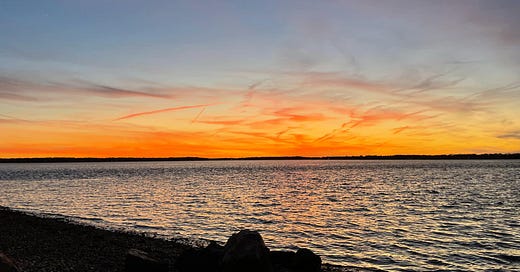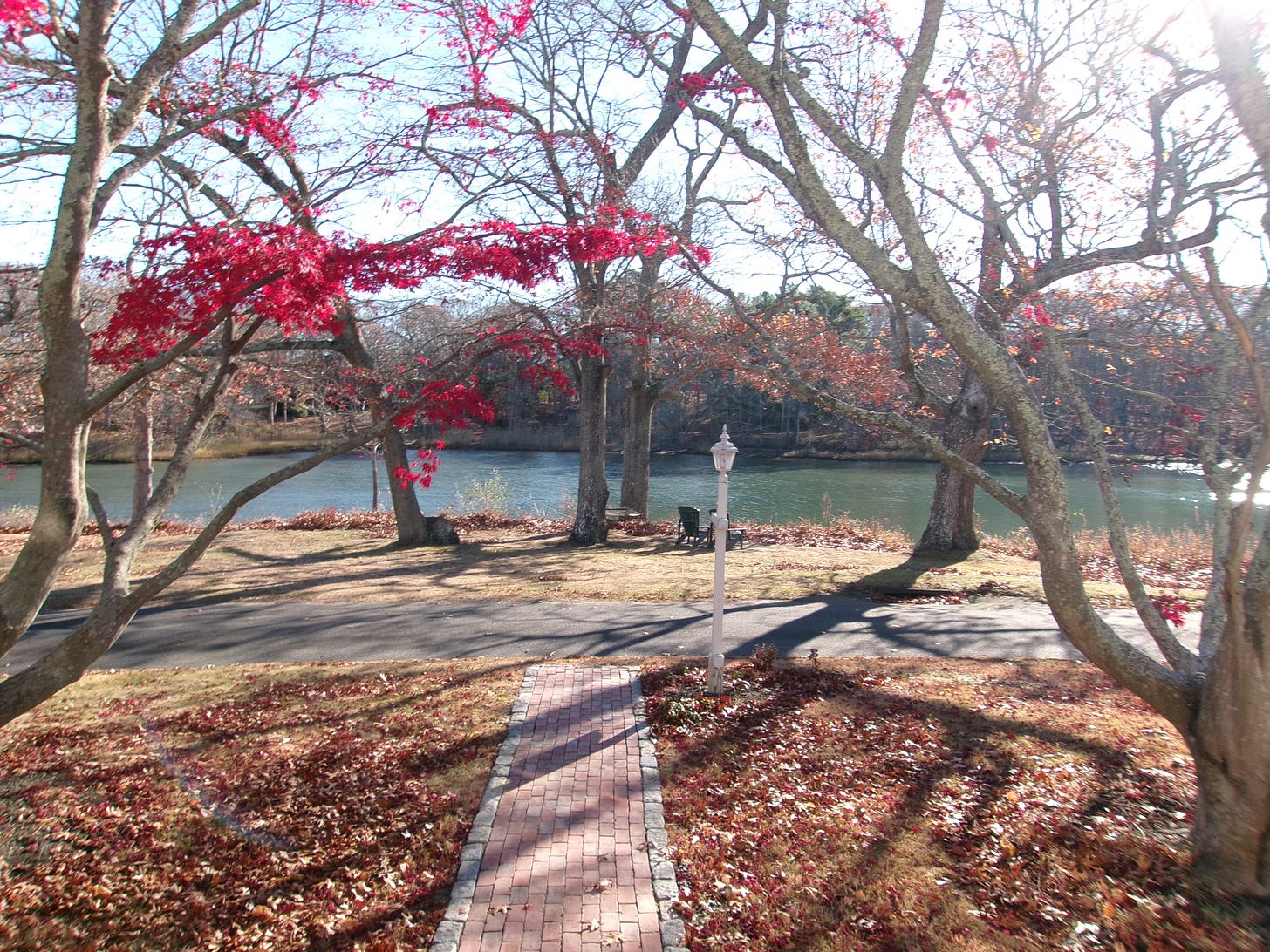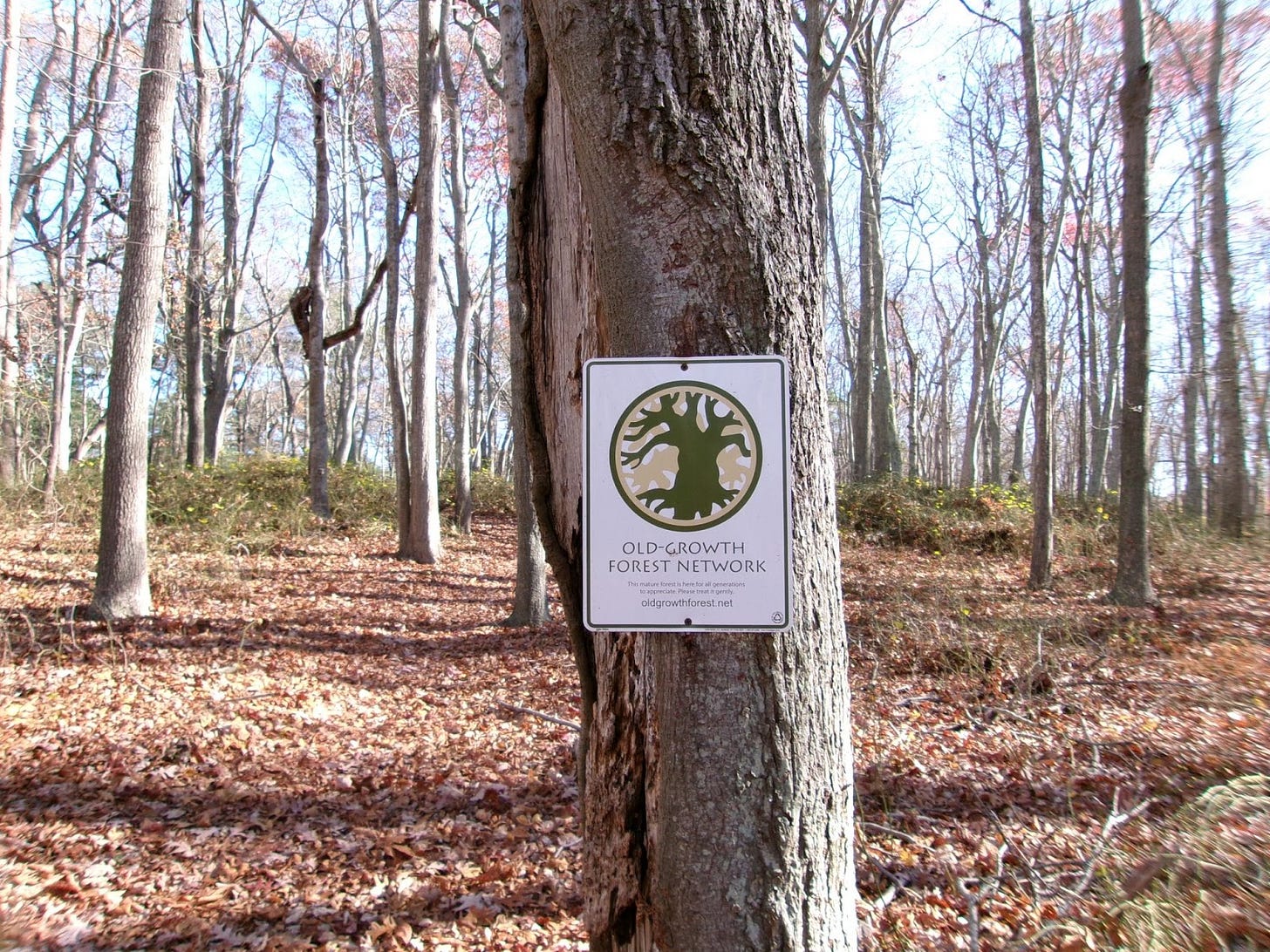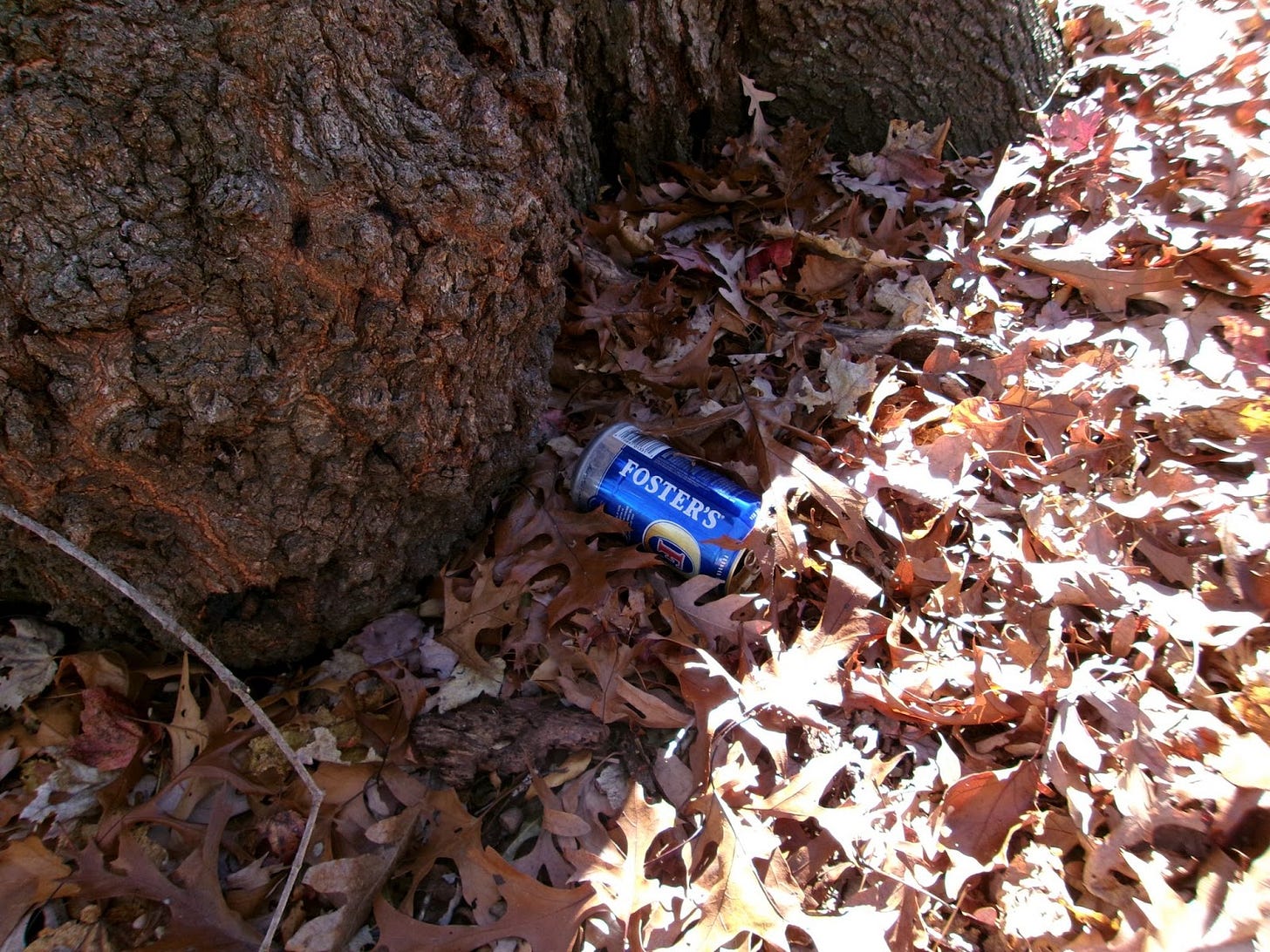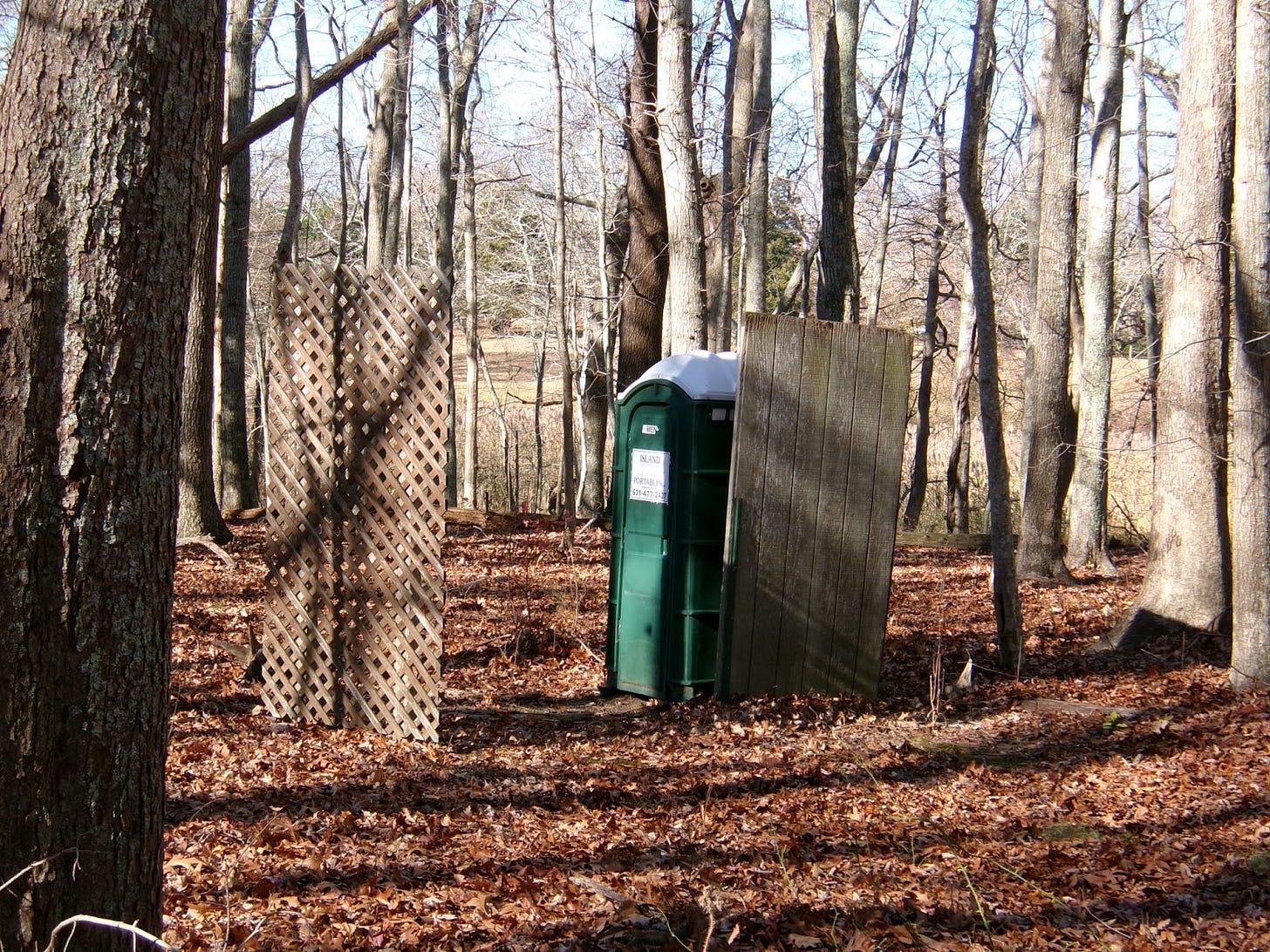Dear reader,
I’m writing to you from a little inn on Shelter Island. It’s all perfectly and appropriately quaint. The decor is colonial-style, with lots of wooden furniture, intricate wallpaper, and frilled white curtains. The view from the front porch is of Chase Creek, one of many inlets of water that run throughout the island.
I’ve come here in November for a few reasons. First, I cannot afford summer prices in a place like this, adjacent to the Hamptons and, according to the innkeeper, the place where Justin Timberlake had his DUI that would “ruin the tour” (“What tour?” “The world tour!”). Second, while I am told it’s sleepy here year-round, I wanted the peace and quiet. I wanted to think, to have the space to explore on my own, without dodging beach-going crowds.
An unfortunate side effect, though, to visiting during the off-season is that it is also hunting season. A few days before the trip, I saw a post made by Sylvester Manor (my main destination) about trail closures. It mentioned that those who violated the closure would be reported to law enforcement.
On the trails were some of the most important things I intended to see: the family cemetery and the Afro-Indigenous Burial Ground. If I wasn’t granted access, there would be large gaps in my visit, which I planned meticulously before the manor seems to have agreed to allow hunting on the property.
I knew I had to try to get permission.
Shelter Island’s Deer Management program is an attempt to reduce the deer and tick population. Shelter Island has had an upsurge in tick bites, which is a problem not just here but in many places. The reason there are too many deer and ticks is that we (humans, but more specifically humans of European descent) have gotten rid of their main predators. It’s hard not to draw the direct line through my own blood back to the source, the Sylvesters forcing the Manhansett off the land and failing to cultivate and care for it properly in the intervening centuries.
I sent a pleading email to the police officer in charge of the Deer Management Program, explaining that I am here for a limited time and that I would very much like to walk the land. Beau (this is his name) replied to inform me that the manor is in charge of private property, not the police, and that despite the signs warning of arrest if one trespasses during this period of time, there would be no actual consequences as long as I obtained permission from the manor.
The layers of meaning involved in asking a police officer for permission to walk a trail aren’t lost on me. The modern police force has its roots in slave patrols, and while Grissell and Nathaniel may have walked their own land casually enough, the people who worked it, who toiled on it, were enslaved. Much of why I was asking permission to walk this trail was to see the place where these very people were buried without markers nor respect.
I called the manor, and the woman on the phone told me that it would be okay to visit only a few specific spots, but that wasn’t I aware the house itself would be closed? I said yes, that this is fine, that I did not intend to go into the house anyway. (It’s a newer house than the one my ancestors lived in.) I wasn’t satisfied with this, but she didn’t seem to have the authority to grant access to the trails anyway. So once we hung up, I sent an email to someone else at the manor, repeating the plea that I had sent Beau.
This time the response was positive, and I received official permission to use the trails between 10am and 3pm today, Monday the 25th. I also went out and purchased, at the urging of friends and family, a bright red hat in order to distinguish myself from deer — though I’ve been told that hunters frequent these particular woods only at night.
So I ventured out, and while I’m still processing most of what I saw and felt, I want to share just a bit.
In the lower part of the woods, the path parallels the road. It’s an old-growth forest, a sign tells me. I stand in the midst of a network of trees. It directs me to a website where I can learn more about old-growth forests.
The website says that on the East Coast, only 1% of old-growth forests remain. The reason for their decline is exactly the same as the reason there are so many ticks and deer: humans. Logging has destroyed most of the forests and, as the website shares, “the amount of old-growth forest has declined every year since European settlement on this continent.”
Nearby to the sign is a beer can sitting against the base of a tree. It looks freshly planted, which is to say I think it’s new. The hunters must have left it here during one of their long nights, waiting for the deer.
Elsewhere in the forest is a port-a-potty, a deep green color, which is entirely visible from three sides, and sheltered on just one: the side that faces the family cemetery.
The people at the manor are on the whole doing very good and important environmental work. Sylvester Manor is an educational farm dedicated to sustainable farming. They have a “Vegetated Recirculating Gravel Filter Constructed Wetland experimental wastewater treatment system” — essentially, the wastewater from their public restrooms is broken down by gravel beneath a native plant garden and reused as nutrients for those plants. Their summer youth programs teach kids about the farm and forest.
And yet, it tugs at something in my core that the damage that’s been done cannot be reversed, that even if everyone woke up with the best intentions tomorrow, the land is still not the same as it would have been — it never will be.
This was a short little missive, but I’m gathering & collecting & thinking. Will write more soon — thank you for being with me.

